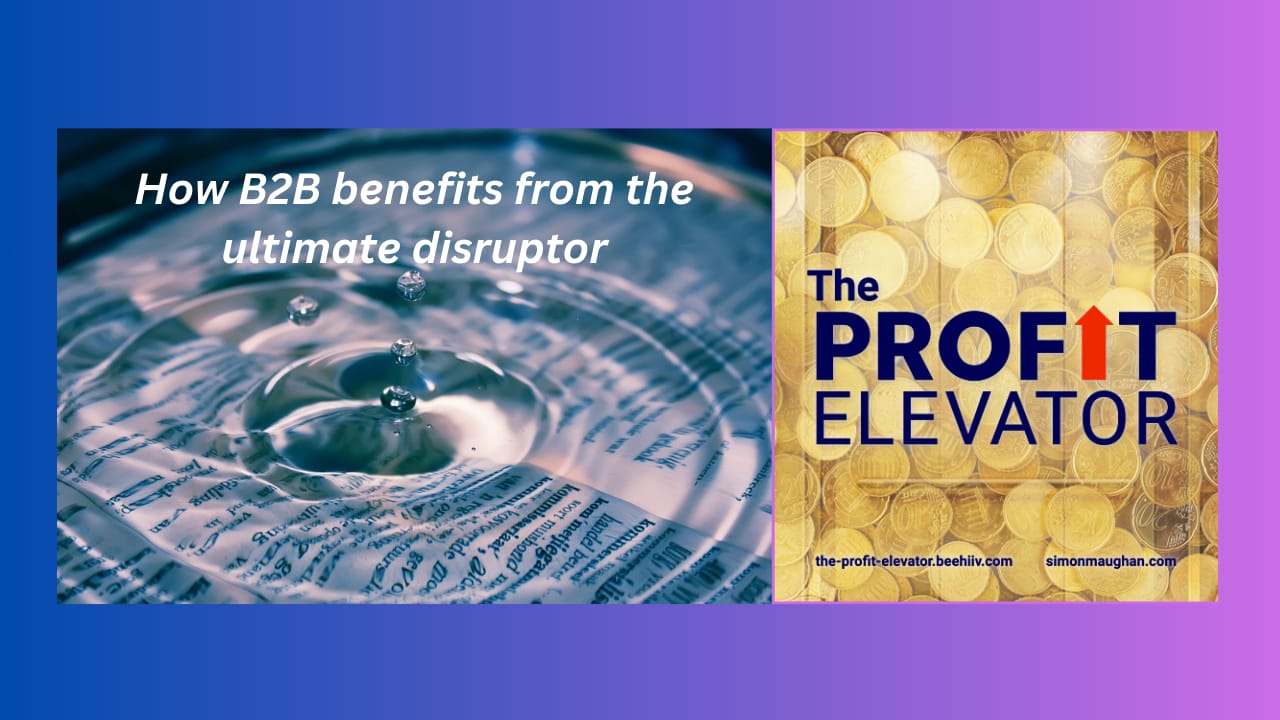
Give to Receive
Reciprocity is when two people help each other out. It is why the best businesses give first and then receive. It is the bedrock of the serve, sell, close sales process.
Some leaders fear their ideas will be stolen. They are poor ideas if they don’t evolve. Others worry about transparent motives. That’s okay, because people know you are selling. But in the same way you ask for a dance long before for a hand in marriage, there are expectations about how you sell.
Meta is giving away its Llama 3 large language model (LLM). Having spent billions, CEO Zuckerberg wrote a letter to explain why. It’s a brilliant business strategy.
Meta’s Reciprocity Strategy
Llama 3 performs on a par with the leading closed source models from OpenAI and Claude. Zuckerberg understands that in technology cycles the means come first, the models second, and the applications third. There is an exponential increase in rewards between stages. Meta earns its money in the application ecosystem.
In artificial intelligence, Nvidia won stage one, the battle for stage two will be drawn out and expensive, and stage three is an open book. Already investors are questioning the returns on investment in developing LLMs. Meta’s attempt to commoditise the technology and focus on its uses, raises further questions.
Zuckerberg explains the benefits of open source software for businesses. Meta is the extreme example of a company that will reap these rewards. But many others will do so as well.
Why Businesses Choose Open Source
1. Businesses must train their own models. Corporations are less flexible than consumers in terms of technology. The tech stack must be scalable and handle proprietary workflows.
2. Businesses do not want to be tied down. Meta’s experience with Apple reinforces the belief in maintaining the freedom to grow as you choose.
3. Data protection. Many businesses do not trust third parties with their data. Those in regulated industries often cannot use the cloud. Open source models may be run in-house.
4. Affordability. Meta says developers can run Llama 3 for half the cost of GPT4o.
5. Avoiding obsolescence. Adopting open source reduces the risk of backing the wrong horse in the race.
Why Meta Uses Open Source
By bringing businesses and consumers into its ecosystem, Meta avoids being trapped in the AI equivalent of Apple’s closed network.
It aims to maximise its returns from applications built using LLMs. Making its model available for free, ensures the most developers and users for its ecosystem.
Zuckerberg claims the market for models is competitive enough that no advantage lasts long. A business that guards intellectual property, lacks the time to make a return on investment. This is a direct challenge to high valuations placed on companies with closed-source models.
Meta predicts that open source has the most potential to keep models current, secure and transparent. A direct parallel is drawn to the success of Linux operating systems.
What This Means For Your Business
Meta’s strategy is the ultimate disruption. It is a textbook example of why you should give to receive. First, provide clients with real value. Then develop that value with them, before introducing paid services.
Zuckerberg is open about his strategy and why Llama 3 is free. He’s in good company, with the Harvard Business Review championing operational transparency as an essential ingredient for customer approval. Uber is an example of how to use this to delight customers in surprising ways.
Knowledge evolves, whether human or machine. The more money to be made in a market, the faster it evolves. Ringfencing expertise and attempting to extract monopoly margins, locks businesses into obsolescent technology. This is why being secretive fails.
Knowledge also evolves towards a commodity. The value is in the application of the knowledge. Meta has demonstrated this with the internet and is set on a repeat with AI.
By using Llama 3 you can position your business to benefit from Meta’s disruption of its big tech competitors.
Questions to Answer
Am I trying to profit from a secret?
Am I being open with clients about how my business works?
How do I develop an application layer to sell outcomes not means?
I’m Simon Maughan and I write The Profit Elevator as a guide for B2B firms seeking faster growth.
Give to Receive is included in The Streamlined Selling system as part of my Business Accelerator Community for busy executives.
If you’d like to know more, please reply to this email. If you found this letter valuable, please share it with a friend and a colleague.
